The Black-and-white-casqued Hornbill is distributed to evergreen forests and savanna across equatorial Africa, in central and western Africa.
Females have a smaller casque and a black bill. The purpose of the casque is unknown for males, although suggested to be for sexual characterization.
The black-and-white-casqued hornbill has very mobile eyes which is not a common trait in birds.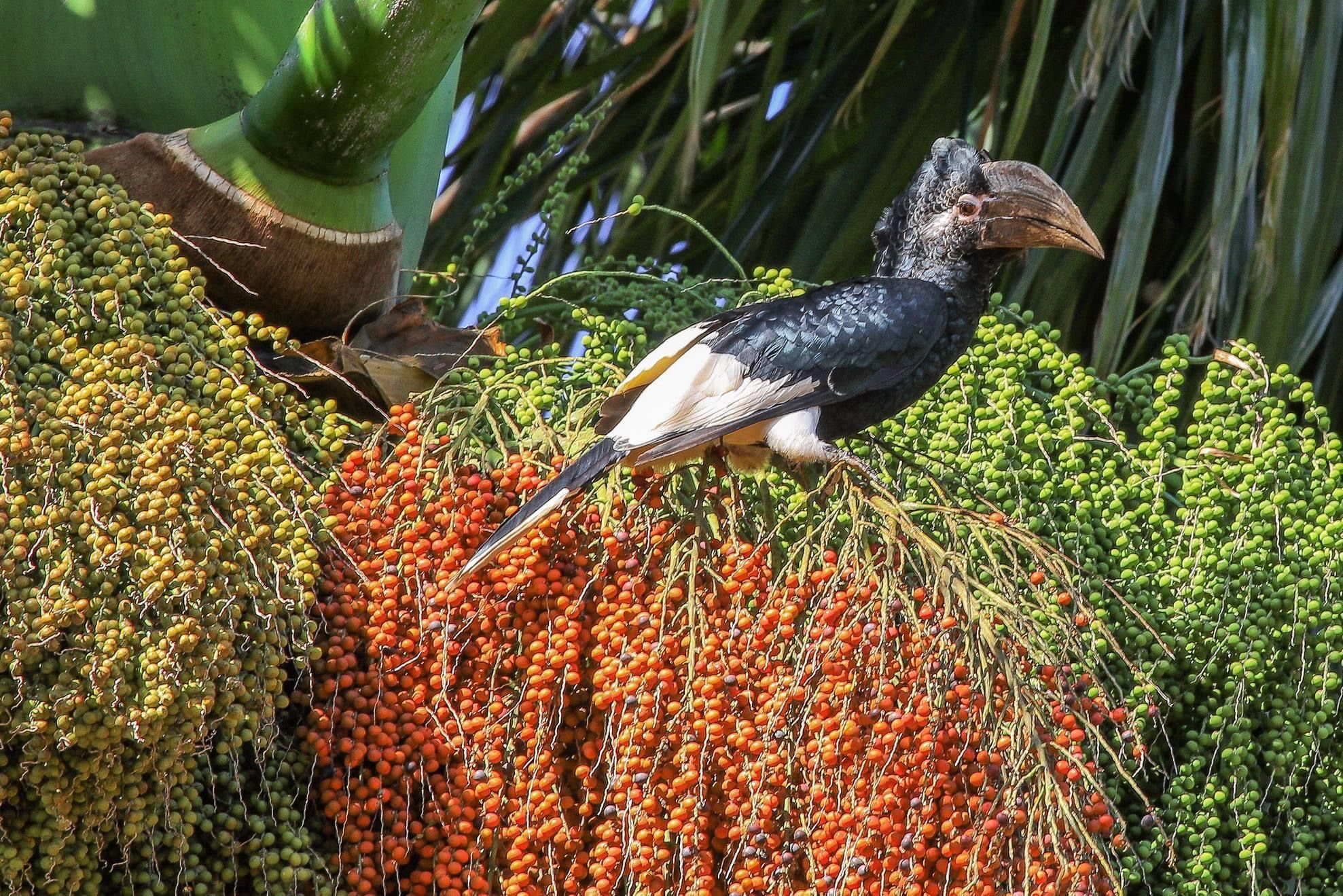
This means that its eyes themselves can move in their socket, while other birds tend to have to move their heads to see.
It is capable of displaying emotions through the feathers at the top of the head, which allows it to communicate its emotional state.
Black-and-white-casqued hornbills are quite vocal, with a large repertoire of calls, one of which can be heard from a distance of 2km.
A monogamous species. Pairs commonly nest in naturally formed cavities 9 to 30 m high in large (>3 m circumference) rainforest trees.
Due to the rarity of these nesting cavities, there is a high degree of intraspecific competition for nesting sites. In order to protect their nest, pairs seal the cavity with mud pellets collected by the male. Inside, the female lays a clutch of 2 eggs, which are white in color with pitted shells. The eggs are incubated for 42 days while the male delivers food to the female hourly through a small slit, regurgitating numerous fruits, mammals, and insects. The male can bring up to 200 fruits per visit.
Usually, only one offspring is reared, with the chick from the second-laid egg dying of starvation. Newly hatched chicks have pink skin and open their eyes at 20 days of age. The offspring fledge in 70 to 79 days and can feed themselves by 40 to 72 days after fledging.
The diet consists mainly of figs, fruits, insects, and small animals found in the trees. Black-and-white-casqued hornbills are mainly frugivorous, with fruit comprising 90% of their diet, 56% belonging to Ficus species. They forage by hopping from branch to branch in the rainforest canopy and reaching for fruit with the tip of the bill, which they then swallow whole. This species is known to consume over 41 plant genera. The black-and-white-casqued hornbill does not consume water directly and seems to instead hydrate itself from the water contained in the fruits that represent most of its diet.
Black-and-white-casqued hornbills mediate seed dispersal of rainforest trees, by defecating or regurgitating seeds.
Carnivores, apes, monkeys, snakes, raptors, and humans all prey on these hornbills.
#Birdsofeastafrica
#visituganadarwandatanzania
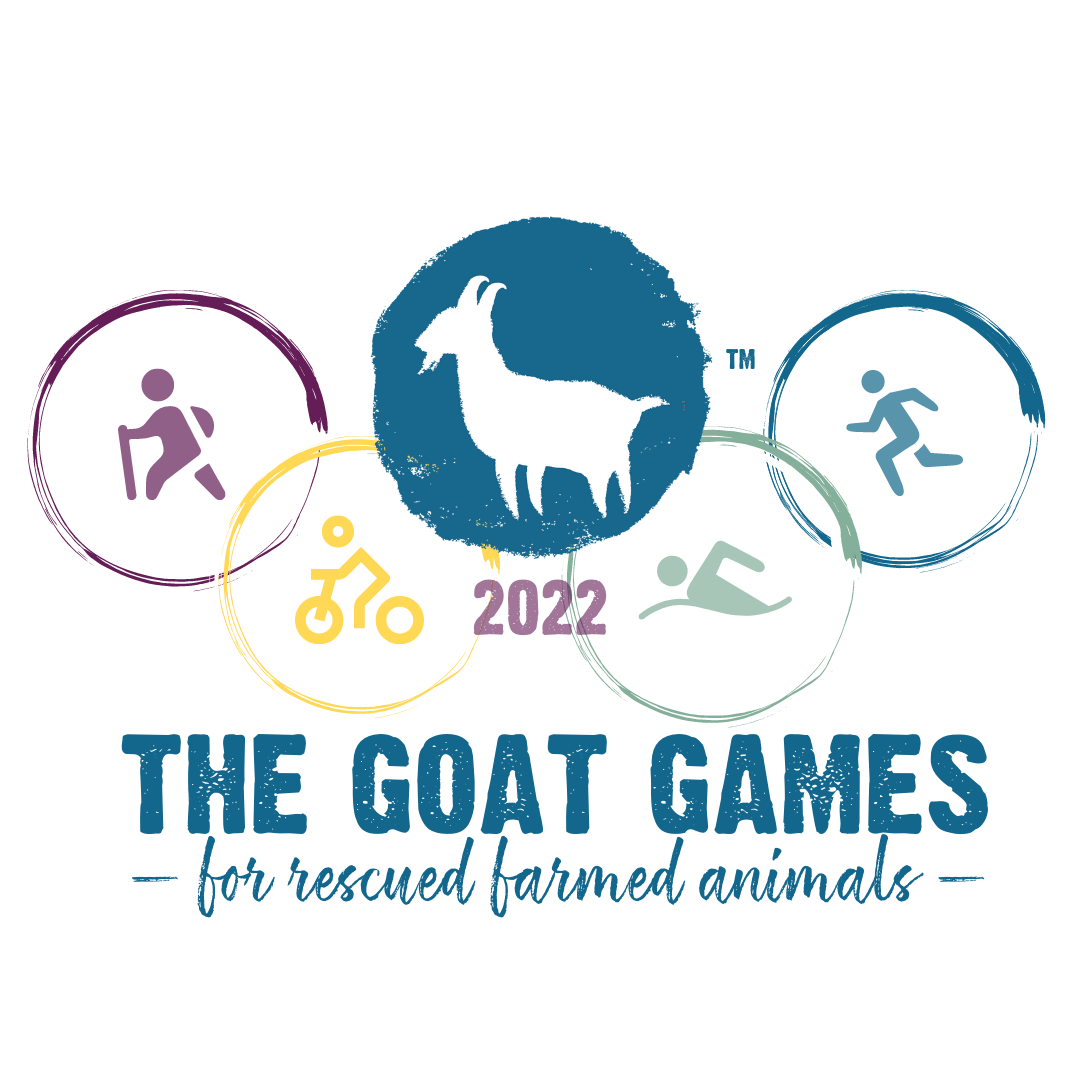
“Have You Goat What It Takes?” Ask 14 Farmed Animal Sanctuaries
Competing in the 2022 Goat Games
Happening August 12-15, The Third Annual Goat Games Inspires Friendly Competition Among 14 Farmed Animal Sanctuaries Nationwide and Their Animal Champions
SAUGERTIES, N.Y. July 27, 2022 – Here we “goat” again! Catskill Animal Sanctuary (CAS), one of the world’s leading sanctuaries for farmed animals, is pleased to announce that it will host the third annual Goat Games. From August 12-15, CAS will be joined by 13 additional farmed animal sanctuaries located throughout the U.S. that will rally the support of animal lovers nationwide in support of their life-saving work. To register or make a donation, visit thegoatgames.org.
While the goats don’t actually compete, human athletes can sign up for an activity of their choosing – “whatever floats your goat!” – to raise awareness and funds for the sanctuary team of their choice. Participants can join this nationwide, virtual event from anywhere in the U.S.
“Covid did a number on us, as it did on nonprofits around the world,” said Kathy Stevens, Founder of Catskill Animal Sanctuary. “Funding plummeted, while the urgent needs of hundreds of animals remained the same. So in 2020, we created The Goat Games as a way for animal lovers to support the work of farm sanctuaries and the thousands of animals who call these special places home. We’re thrilled to host The Goat Games again to raise funds for farmed animals everywhere— and that need is more urgent than it’s ever been.”
Stevens explained that not only are sanctuaries “just digging out, in year three” of the pandemic, but they’re doing it at a time when the cost of everyday supplies is through the roof. “Grain cost is up. Hay cost is up. Medical supply costs are up. The cost of building materials is so high that a contractor suggested we not build anything.”
The Goat Games is a virtual event that challenges human participants to run, walk, bike, hike, or complete any activity of their choosing to raise money for a participating sanctuary. Each sanctuary has selected a farm animal as their team captain, and “athletes” will rally behind the farmed animal representing the sanctuary they want to support.
“We want to inspire animal lovers around the country to participate,” said Stevens. “Do whatever it is that you love – whether it’s running, reading, volunteering or binge-watching Netflix! Once folks pick their activity, they simply invite friends and family to support them as they raise funds for their favorite sanctuary.”
In its first year, Catskill Animal Sanctuary raised over $42,000. In 2021, CAS expanded The Games, inviting nine other farmed animal sanctuaries across the country to join, as a way to build camaraderie and increase national awareness of their life-saving work. The consortium raised over $217,000 to help rescued farmed animals. This year, they hope to increase that figure to $260,000.
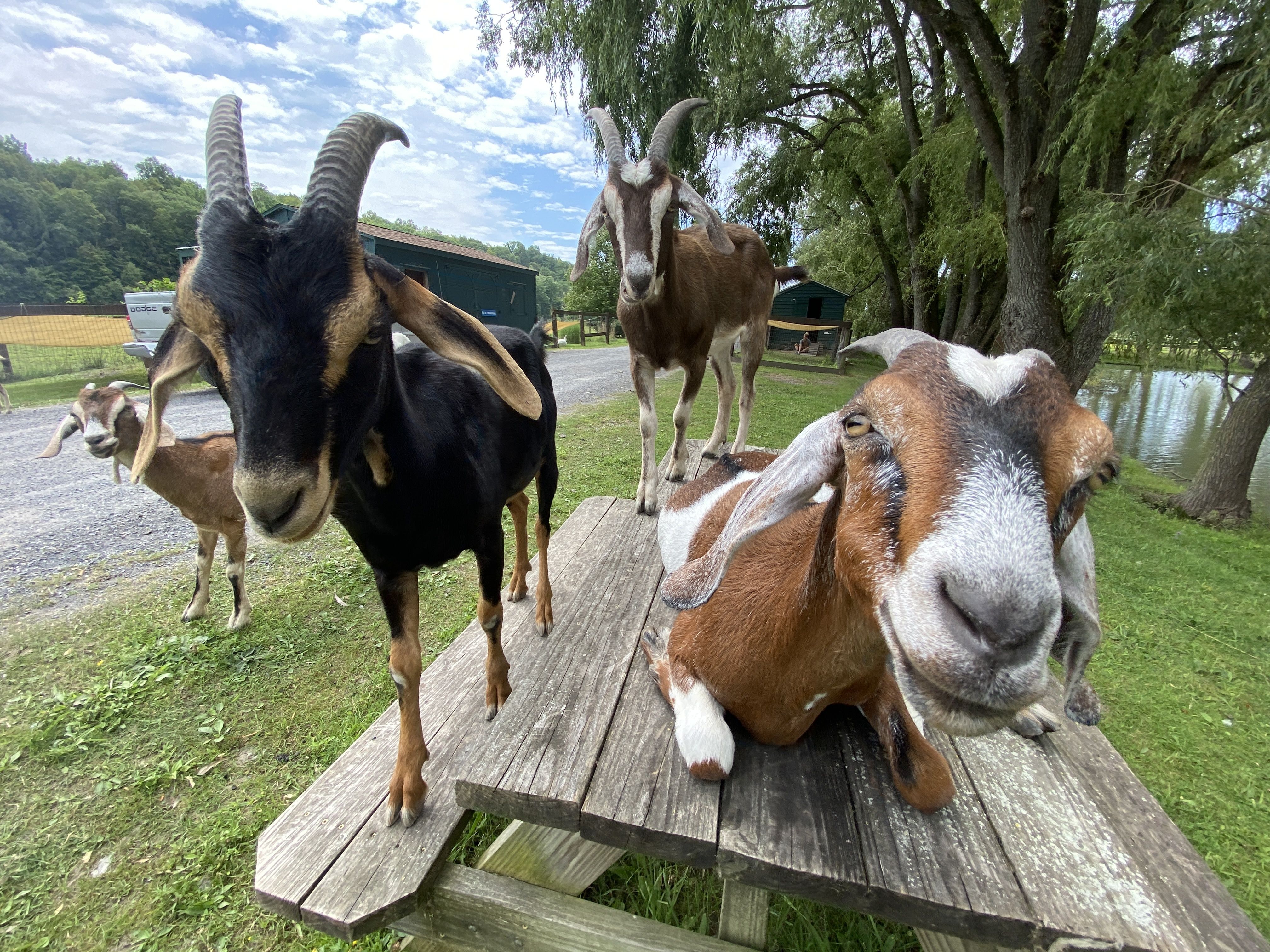
The participating sanctuaries in the 2022 Goat Games include:
· Catskill Animal Sanctuary - the hosting Sanctuary (Saugerties, NY)
· Alaqua Animal Refuge (Freeport, FL)
· Farm Sanctuary (Watkins Glen, NY & Acton, CA)
· Farmaste Animal Sanctuary (Lindstrom, MN)
· Heartwood Haven (Wauna, WA)
· Indraloka Animal Sanctuary (Mehoopany, PA)
· Iowa Farm Sanctuary (Oxford, IA)
· Kindred Spirits Sanctuary (Citra, FL)
· Little Bear Sanctuary (Punta Gorda, FL)
· Piedmont Farm Animal Refuge (Pittsboro, NC)
· River’s Wish Animal Sanctuary (Spokane, WA),
· Safe Haven Rabbit Rescue (Clinton, NJ)
· Wildwood Farm Sanctuary (Newberg, OR)
· Yesahcan Sanctuary, Inc. (Arcadia, FL
Funds raised through donations and sponsorships will support the life-saving mission of each participating sanctuary. For more information on The Goat Games 2022 including registering and/or making a donation, visit thegoatgames.org.
About Catskill Animal Sanctuary
Founded in 2001, Catskill Animal Sanctuary is a non-profit, 150-acre refuge in New York's Hudson Valley. It is home to eleven species of rescued farmed animals with between 275 and 400 residents at any given time. In addition to direct animal aid, the Sanctuary offers on-site tours, a weekly podcast, an award-winning vegan cooking program, and educational programs that advocate veganism as the very best way to end animal suffering, improve human health, and heal an ailing planet.
Catskill Animal Sanctuary is the only U.S. farmed animal sanctuary with highest honors and accreditations from:
Charity Navigator (4 Stars), GuideStar (Platinum Rating), Better Business Bureau, and GFAS: Global Federation of Animal Sanctuaries
For more information, call (845) 336-8447 or go to www.casanctuary.org.
-End-
Media Contact Information:
Lauren Witt, Account Supervisor
(817) 721-5576
catskillanimalsanctuary@Interdependence.com
If one trophy hunter can spend $200,000 to hunt exotic animals and say it is not about killing, and it is about helping wildlife conservation is he/she being realistic? Wouldn't one say if it is not about the thrill of killing an animal and it is about the love you have for wildlife then why not use the money in a way that saves our wildlife and their future?

Isn't Trophy hunting more about the money versus conservation? Breeding and raising wildlife is a million-dollar business. Do you believe it is about conservation or about the money that flows into one's pocket?
Let us take a look at one organization in Texas that claims to be about conservation: This organization run by 2 people has convinced wildlife lovers and organizations that they care about conservation and with this approach has easily raised millions of dollars to get the business up and running!
Mojostreaming has spoken with the founder and he believes we are not fully educated on what the organization is about. We have invited him to be our guest on our talk show to help us better understand. We are still waiting on his reply.
We encourage you to look up wildlife ranching in America (most are in Texas) One rancher received over 11 million from investors and I believe they easily convince people they are about conservation versus making money off of selling exotic animals to zoos and making money off of enclosed trophy hunting where people easily pay 10,000+ for a kill.
Please research and see what you find and come up with your own impressions.
Let us watch this news documentary and ask yourself if it is okay to kill 8 to 14 other wild animals to bait one leopard so you can kill that one leopard. The fee to participate in this sport cost over 26,000 with the loss of up to 15 animals. Why? just so you can place the head on your wall, take a photo and brag to your friends, and then sell the skin for you to make money off of? Then tell yourself that you love wildlife and you are helping conservation.
https://www.youtube.com/watch?v=-NdopGBtb0A
ILLEGAL WILDLIFE TRADE IS A HUGE PROBLEM- it generates millions of dollars at the expense of the species. Many animals are on the brink of extinction and one country to blame is the United States of America because that is where the big buyers come from: Click on the link below to learn more:
Not only do we have to worry about the illegal trade of wildlife we have to worry about whether our Zoos are participating in such acts.
Please watch: mojostreaming.com
We can also debate hunting in your local state to control wild animals such as deer, raccoons, turkey, and more. We are not doing enough to make sure hunters are following proper protocol. Are licenses being purchased? Are they tagging and reporting their kill and keeping it to their assigned limit? Are they baiting- using salt block, night cameras, feeding stations? Are they using dogs, scents, and other enticing products to fool the animal? Are they hunting in enclosed fencing like they do in Peru, Indiana? Are they dumping the carcass or taking it to the properly assigned stations for their area? Are they hunting for food or for the trophy and bragging rights? Are they completing the proper permits to be on someone's property, and tagging their stand? It is easy to not follow such guidelines when you have stores like Rural King promoting special feed, salt blocks, and other baiting products during hunting season. How about the hunting contest that is going on in America.
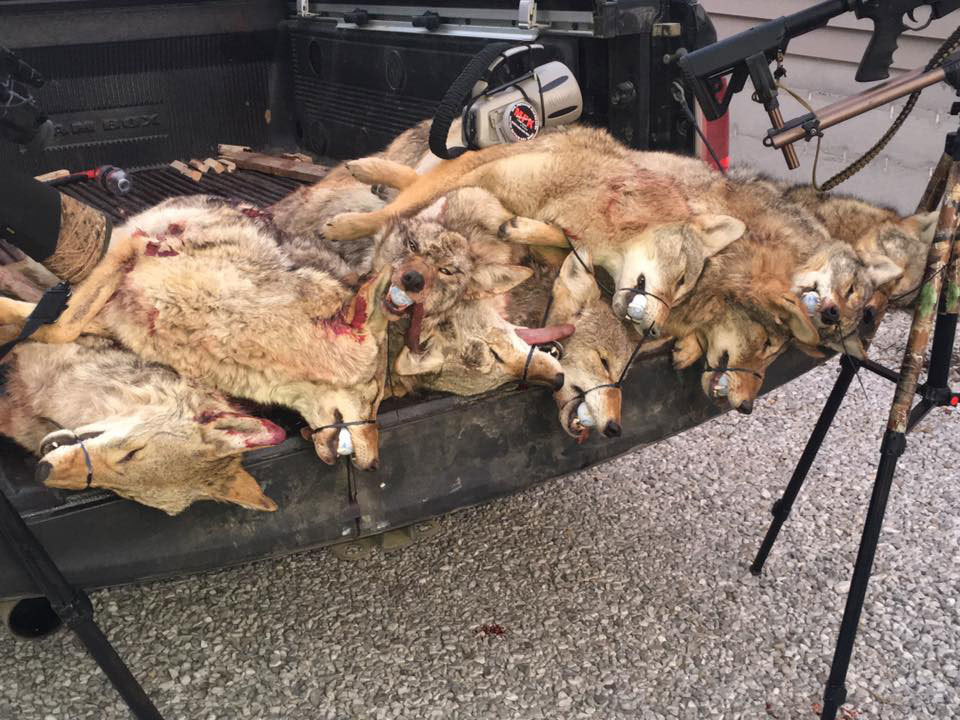
Coyotes were killed at the Southern Illinois Predator Challenge in 2017. COURTESY OF MARC AYERS/HUMANE SOCIETY OF THE UNITED STATES
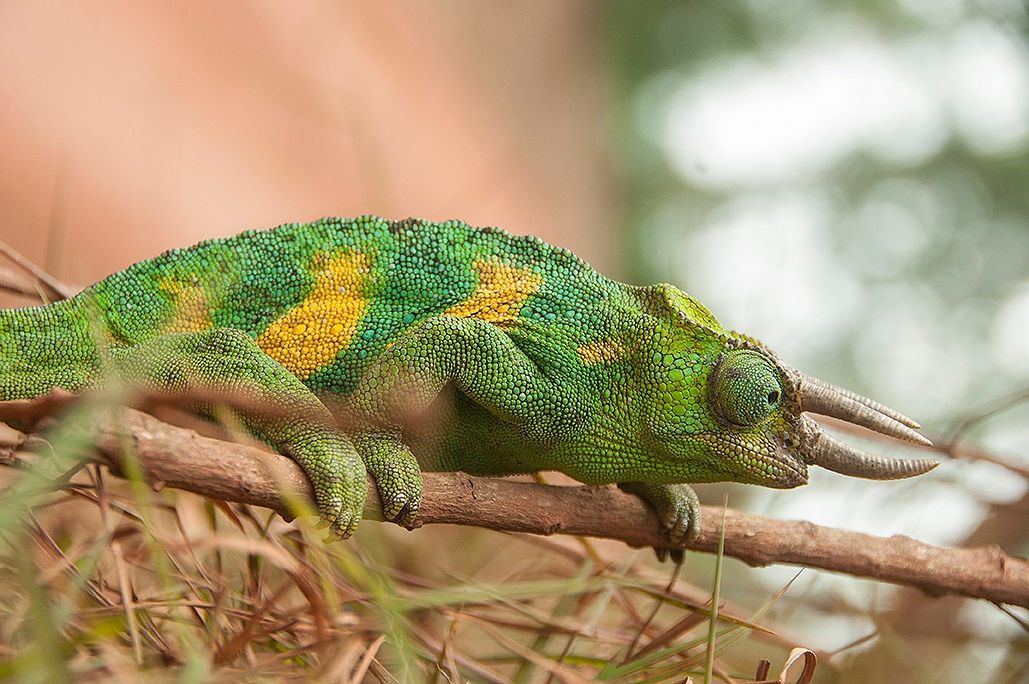
Tourism is a recreational travel that people do, Uganda has
been one of the African countries that has attracted prominent number of
tourists from different parts of the world. Uganda the pearl of Africa is one
of the fastest growing economies in Africa, there are so many building blocks
of this economy but one of the vital one that she is proud of is her tourist
attraction that she exhibits to tourists, with a lot of nature, culture and
amusement to offer. A tree did not start as a tree it started as a seedling
sown in the soil and because of the rich nutrient of the soil and care given to
it, it turned it into a tree, there are companies that have thrived and are
still pushing hard to strengthen the tourism industry in Uganda. One of them is
Interior safaris East Africa, one of the veins of the heart of Uganda tourism.
Uganda
has one of the best climates in Africa and in the whole world, this has maintained her tourist
attractions which has made it possible for tourism to occur. One of Uganda’s
tourist attractions are national parks, Uganda has numerous national parks like
Murchison Falls National Park often known as Kabalega mostly visited by
tourists because of its natural beauty, it’s located in the northern region of
Uganda it is 1,344 square miles large this makes it the largest wildlife
reserve. Queen Elizabeth National
Park which is 1,978 square kilometers in size and Lake Mburo National Park etc.
Uganda also has unique eye-catching features in the national parks like trees,
different species of birds and mountain gorillas. Interesting and enjoyable
activities at your view from different parts of the parks which includes
birding, chimpanzee tracking, cultural visits like meeting pygmies from Batwa
who were the first inhabitant of montane rainforest, hot air balloon safaris
and boat cruise. Due to the magnificent hospitality that Ugandans give tourists,
has increased their interest in touring the country because they make them feel
at home. All national parks in Uganda have lodges and hotels at different
points of the national parks which provide the tourists with good care, great
meals and fancy accommodation. When it comes to the longest river in the world
don’t look farther because it’s here in Uganda as well as mount Elgon, these
are places tourists won’t stop talking about because they are enticing and rich
in nature.
Life
has been made easy in case you would love to tour Uganda; with the help of
Interior Safaris East Africa you can be anywhere you want to be. Interior
safaris East Africa has been in the center of the tourism industry in Uganda,
it was founded by Elasmus Godfrey Tumwesigye in 2013. It has its head office in
Uganda. Interior safaris East Africa cares so much about their customers to the
extent that we have Agents in Europe for tourists interested in bare a peek of
the pear of Africa and the great lakes at large. Interior Safaris East Africa is surely the
right package deal to take you around Uganda, Rwanda and Tanzania because it
comes With lots of surprises from their services, Interior Safaris East Africa
gives the best to its customers, and that’s why before tourists decide on the
place they would love to visit they first speak to a tour consultant from Interior
Safaris East Africa who will later give them advice about the package that will
fit in their budget that they will be comfortable with.
Connect now to be in a
place enriched with nature.
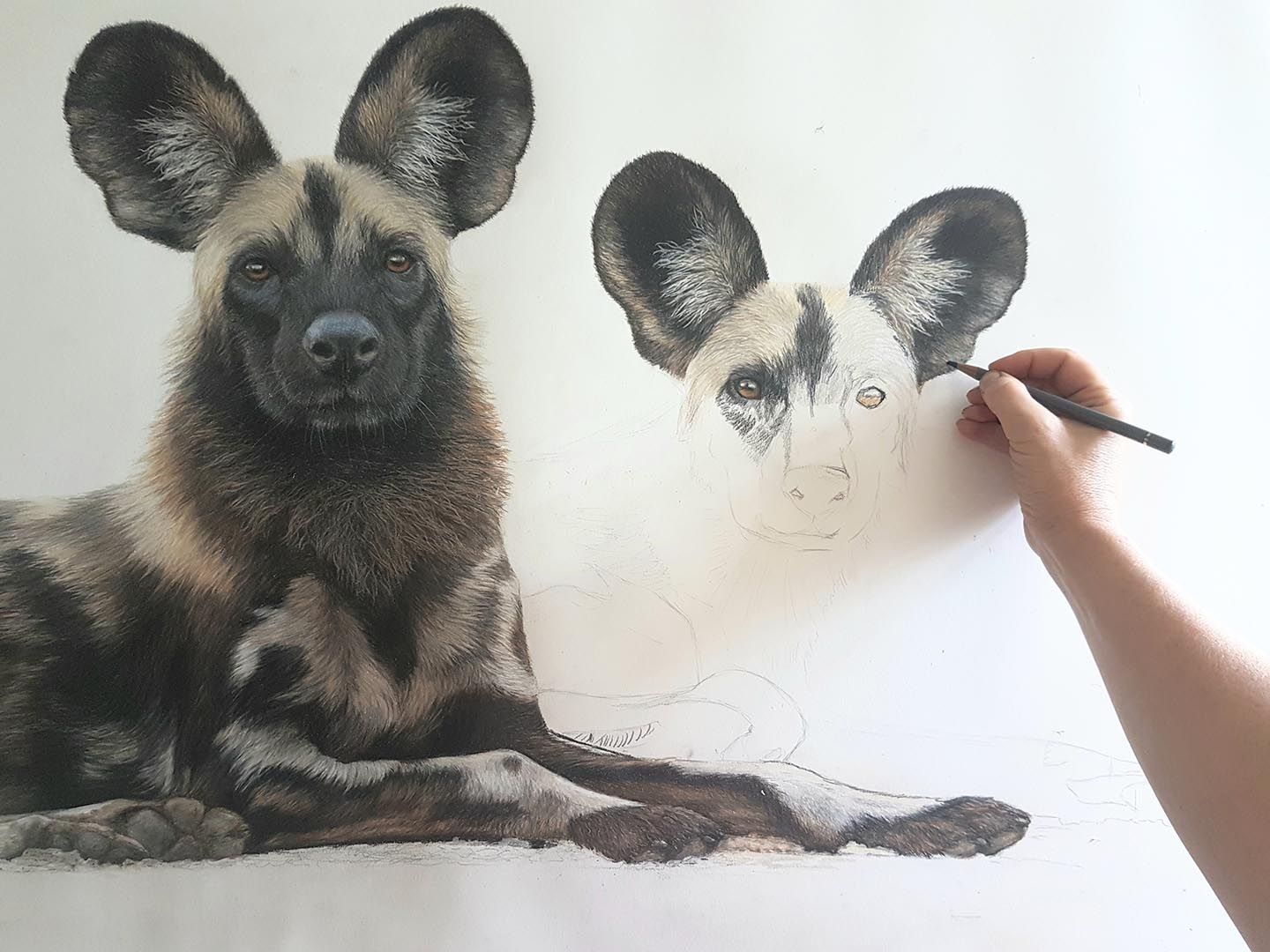
Charlotte Williams is a
highly respected and increasingly celebrated British fine artist with a
particular interest in wildlife. She is entirely self-taught and was
drawing her first animal portraits as young as nine years old.
Despite being afforded a scholarship to Farnham Art College
in her late teens, she headed instead for South Africa and the ‘bush’, where
she spent several years living and working on a game reserve in the Eastern
Transvaal. Immersed in the raw environment of the veldt, it was here
that Charlotte’s life-long passion for animals and the wild was born, and
where she passed many hundreds of hours wandering, observing and sketching all
that she saw.
On her return to the
UK in the mid-1990s, Charlotte continued to dedicate herself to art,
this time in Brighton. She went on to exhibit her work in numerous shows -
locally, and in London. She has since been in great demand and
the majority of her work today is by commission, both at home and
abroad.
Charlotte’s consuming affection for wildlife
conservation has remained paramount, and her depiction of Cecil The Lion,
who lived primarily in the Hwange National Park in Zimbabwe, has become one of
her iconic portraits. She later auctioned the portrait to
raise funds and awareness of the battle against poaching, and she today
continues to support myriad conservation enterprises and wildlife foundations
across the globe.
Each of Charlotte’s meticulous artworks aims to capture the
soul and spirit of her subjects, from behind the eyes, so that you might know
them and feel them, as if they were living and breathing before you. Her
appreciation of wild animals, coupled with her unapologetic perfectionism -
enable her to create paintings and drawings that are unique and wholly
authentic.
Though now based in her studio in rural East Sussex since
2010 she has an ever growing global following on social media and has
recently been made a signature member of Artists For Conservation. She is
represented by numerous people, including the prestigious London and Sussex
based gallery Rountree Tryon and has exhibited at, amongst others, Masterpiece
Art and Gallery Different in London
.